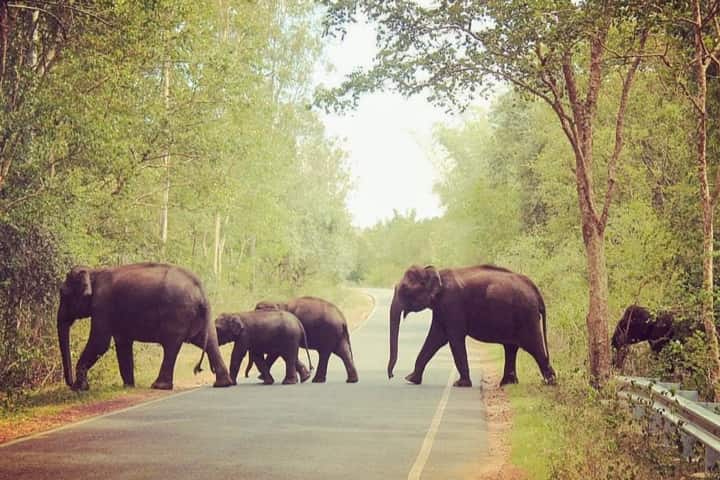Using technology has proved very beneficial in avoiding human-animal conflict and also helped in saving wildlife. An example of this is the solar-powered system which has been put on a 1.2-kilometre stretch between the Bannari check post and Bannari Amman temple that provides prior warning about elephant movement in Sathyamangalam Tiger Reserve in Tamili Nadu’s Erode district.
This system has proved very effective in warning drivers of vehicles, both four and two-wheelers about the movement of animals and thus preventing accidents and fatalities. From February when the system was installed till now 15 safe elephant crossings have been reported.
Explaining its working, Sanjoy Deb who heads the non-governmental organisation Technology for Wildlife which set it up said that its basis is laser-based communication between two sensors. These have been fixed on either side of the road and act as transmitter and receiver respectively.
The system becomes operational at dusk automatically and as the laser beams are placed at six feet height – the average height of an elephant – whenever the animal crosses the two poles, communication between them breaks down triggering flashing of warning lights.
It also sends immediate SMS to forest officials and staff. The flashing lights provide prior warning to people driving vehicles about the movement. To inform people about this system, a message with details has been placed at the checkpoint and other places.
While the warning is in progress, the SMS alert to forest department, including range officers, enables a team to reach the spot immediately to divert the animals.
Besides, the poles also emit a buzzing sound to make the elephants divert from their path.
The reason why this spot was chosen was because it has been identified as an elephant crossing stretch. Installed at a cost of Rs.8.3 lakhs, the money for it was donated by the Rufford organisation of the United Kingdom.
Interestingly, the system has been developed by a team led by associate professors of electronics and communication engineering Sanjoy Deb, R. Ramkumar and R. Saravanakumar from Bannari Amman Technology.




















